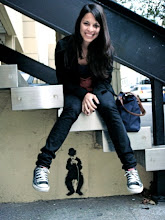
Even if this film is indisputably about heroin, it is also a film about many other subjects. For example, it talks about the fast caducity of the “in” factor and the anxiety provoked by the threat of loosing touch with such reality. In addition, it touches on political subjects. I particularly liked the scene in which the gang of boys follows Tommy into the characteristic Scottish landscape. Here, Renton gives a monologue about what little it means to be Scottish, and his feelings about the British colonization. He provides a concise, yet deep insight into their view of nationalism and their relationship with their own country. Renton yields “Ah’ve never felt British, because ah’m not. It’s ugly and artificial. Ah’ve never really felt Scittish either.” Such a disconnection with society also came through during the scene in which the baby dies. Renton, paralyzed by a sense of impotence, wishes he “could have something to say, something human.” It is as if given their addiction and life style they have become a new kind of animal, something lower than humans.
I particularly like low-budget films because filmmakers are forced to be extremely creativity in order to surpass the roadblocks created by monetary constrains. Trainspotting is a good example of a successful low-budget film. In this case, the financial necessities dominated the creative process from beginning to end: from the writing of the script to its production, finding “new ways of telling new stories [and] speaking of lives that have rarely been spoken of” (27). For this reason, Boyle predominantly shot indoors and the actors selected were not well known. It is also interesting to notice how well they incorporated the lighting sources into the set design. We can see big lights in the floor, covered-up by color filters, as well as red filters covering the windows. However, we never question their presence in the scenes. Additionally, they disregarded the usual use of 3 point lighting, thus, creating unusual shadows in the walls and actors’ faces.
Besides lighting, the monetary restrictions forced very creative solutions out of Hodge when he was writing the script. He knew he should try to keep outdoor scenes to a minimum and thus had to think of inventive solutions to move characters from one location to another, coming up with one of my favorite shots from the film. After Rento’s trial, he walks out of the pub to go to Swanney’s in search of drugs. Hodge explains that he “was thinking, how can I get him there? Are we going to have to see him on the bus or on the street. I thought, no, I can’t be bothered with that. We’ll just have him jumping off the wall” (18) and falling in the floor of the dealer’s house, where the camera was awaiting for him.
After Trainspotting, Boyle said that his team was ready to make movies with a larger budget in order to improve their work. He explains that making low-budget films “is a wonderful discipline to have in the beginning. But as you develop more it’s like being stuck on an escalator that’s moving the wrong way. If you stand still on it you end up going backwards” (30). I haven’t seen A Life Less Ordinary or The Beach, but I’m really curious to see the results of the immediate increase of budget in this team’s creative process since there are numerous directors who lost their essence once immersed in the studio life of Hollywood.

No comments:
Post a Comment